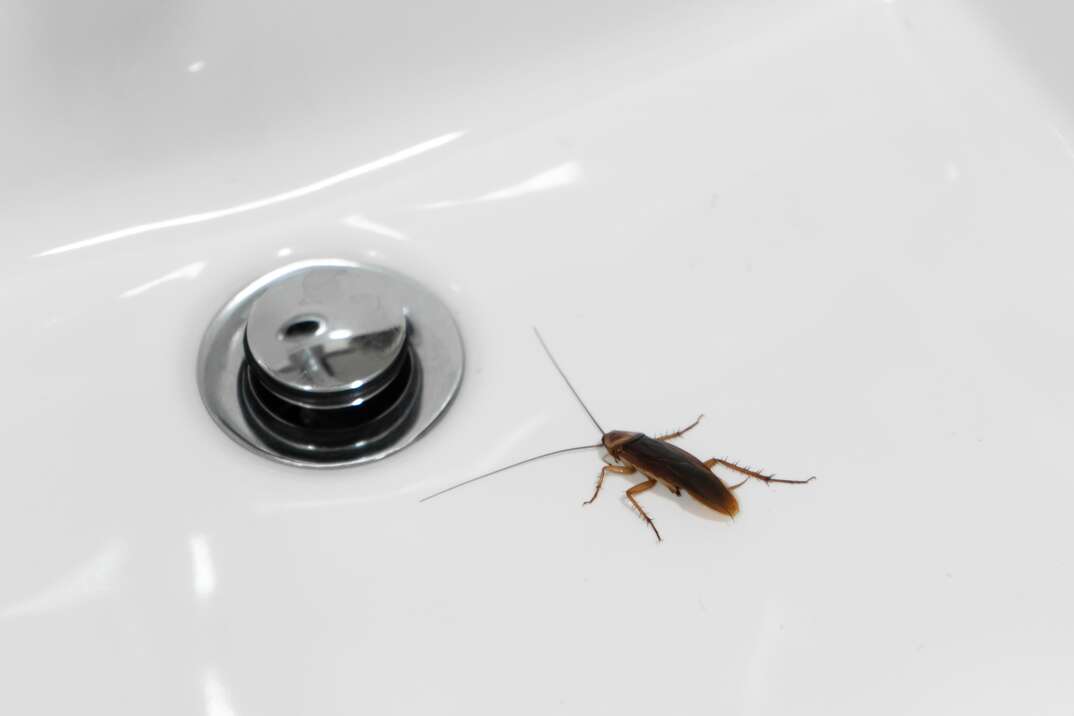- AppliancesElectriciansHVACLandscapingLocksmithPest ControlPlumbingRenovationRoofingT V RepairAll Home Improvement
- Car AccidentClass ActionCorporate LawCriminal DefenseDivorce LawEmployment LawFamily LawFinancial LawLegal AidMedical Injury LawyersMedical MalpracticeReal Estate LawWater Fire RestorationAll Legal
- InvestmentRetirementAll Finance
- Animal InsuranceAutoGeneral InsuranceHealth PolicyHome RentersAll Insurance
- DentalHealth SpecialistsAll Medical
- Animal CareVeterinaryAll Pets
- Auto GlassTowingAll Automotive
Bugs Are Getting in Through Your Drains. Here's How to Stop Them

Bugs making their way into homes through drains can be a persistent and disgusting problem for homeowners.
Read More Pest Control Articles
The dark and damp environment of drains can attract a variety of insects, creating an unwelcome infestation.
Cockroaches
Cockroaches are notorious for their adaptability and can easily find their way into drains. They are attracted to the organic matter and moisture present in drains, creating an ideal environment for them to thrive.
Drain Flies (Psychodidae)
Also known as sewer flies, drain flies breed in the organic material that accumulates in drains. Their larvae feed on the sludge and gunk found in pipes, making drains a perfect breeding ground for these pesky insects.
Silverfish
Silverfish are moisture-loving insects that can navigate through drains in search of damp and dark spaces. They are attracted to the humidity present in drain systems and can enter homes through the plumbing.
Ants
Certain ant species, particularly those seeking water sources, may find their way into drains. They are drawn to the moisture and organic matter within the pipes.
Earwigs
Earwigs are attracted to damp and dark environments, making drains an appealing habitat. They can crawl through the plumbing and emerge in sinks, showers or other drain openings.
Reasons Bugs Enter Through Drains
Deep within the twists and turns of pipes, bugs are drawn by a simple force craved by all life forms – moisture. Drains, with their constant dampness, become attractive to insects seeking water. From the access outlets of sewer pipes, bugs make their way into our homes, enticed by the promise of a water source.
Yet, it's not just thirst that compels them. Drains serve up a hidden buffet of sludge and debris, a feast for bugs like cockroaches and drain flies. These creatures don't just use drains as pathways; they see them as convenient spots for a quick meal.
For certain bugs, drains can also become more than just a source of sustenance; they serve as protected breeding grounds. The drain fly, for instance, lays its eggs in the film that coats drain surfaces. Stagnant water and organic material turn our plumbing systems into perfect nurseries for insect larvae.
Basically, the dark and damp conditions within drains mimic the environments bugs naturally seek. It's a bit of a twofer for the bugs: the promise of shelter and food seamlessly integrated into the plumbing systems running through our homes.
More Related Articles:
- What to Look For When Hiring an Exterminator
- Are Pest Control Products Dangerous For Kids and Pets?
- What Are Ultrasonic Pest Repellers?
- 10 Ways to Prevent Termites
- How to Spray for Mosquitoes
While the drains might prove an attractive home for bugs, no homeowner wants them moving in. Fortunately, there are a range of simple, affordable steps you can take to keep creepy crawlies from living in — and climbing up — your home's drains.
Regular Cleaning
To prevent the buildup of organic matter, regularly clean and maintain your drains. Use a drain cleaner or a mixture of baking soda and vinegar to break down sludge and prevent insects from finding a food source.
Use Drain Screens or Covers
Install drain screens or covers to physically block insects from entering your drains. Screens allow water to pass through while keeping pests at bay. Covers, on the other hand, completely seal your drain when it is not in use. While it can be a bit of a hassle to constantly lift these covers up when you're using water and then put them down when you're done, they're a nearly foolproof way to keep the bugs at bay.
Fix Leaks
Address any plumbing leaks promptly, as standing water attracts bugs. Repairing leaks not only helps prevent infestations, but also preserves the integrity of your plumbing system.
Seal Entry Points
Inspect and seal any cracks or gaps in your home's foundation, walls or around plumbing fixtures. This reduces the likelihood of insects finding their way into your living spaces and then entering your plumbing system, where they can navigate their way through your drains.
Maintain Dry Drains
After use, ensure that sinks, showers and other drain openings are dry. Wipe down surfaces and eliminate any standing water to remove the attraction for bugs seeking moisture.
Bugs entering homes through drains can be a persistent issue, but with proactive measures and regular maintenance, you can significantly reduce the risk of infestation. If you’ve tried these methods and you still have a problem, seek out a professional pest control service, as they will be able to help you get things under control.
Elocal Editorial Content is for educational and entertainment purposes only. Editorial Content should not be used as a substitute for advice from a licensed professional in your state reviewing your issue. Systems, equipment, issues and circumstances vary. Follow the manufacturer's safety precautions. The opinions, beliefs and viewpoints expressed by the eLocal Editorial Team and other third-party content providers do not necessarily reflect the opinions, beliefs and viewpoints of eLocal or its affiliate companies. Use of the Blog is subject to the
Website Terms and Conditions.The eLocal Editorial Team operates independently of eLocal USA's marketing and sales decisions.



